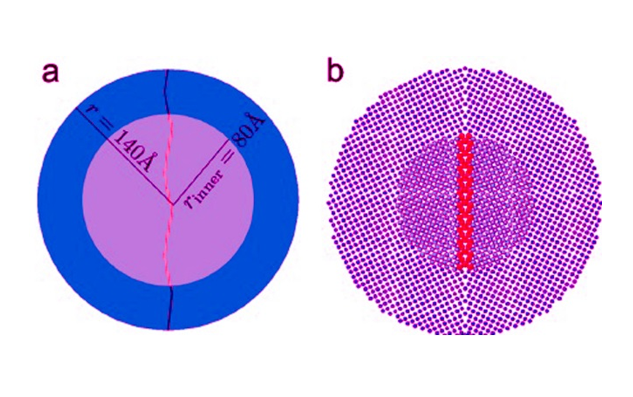 A machine learning approach to model solute grain boundary segregation (模拟溶质晶界偏析的机器学习方法)
A machine learning approach to model solute grain boundary segregation (模拟溶质晶界偏析的机器学习方法)
Liam Huber, Raheleh Hadian, Blazej Grabowski & Jorg Neugebauer
npj Computational Materials 4:64 (2018)
doi:s41524-018-0122-7
Published online:23 November 2018
Abstract| Full Text | PDF OPEN
摘要:在现代结构材料中,即使是低至百万分之一浓度的溶质原子杂质,也可能引起其力学响应和断裂性能的质变。这些变化通常与材料晶格缺陷处溶质原子的富集有关。因而偏析这一概念在材料科学中至关重要。将这一概念纳入现代材料的设计策略中需要准确而可行的计算建模工具。然而,由于溶质原子对应的缺陷构型及在晶格中的可能占位数目极大,对此进行建模需要依赖苛刻的近似。在本研究中,我们将超过100万个数据点的高通量研究与机器学习相结合,获得了一个高效计算框架,从而为溶质偏析模拟提供了有效途径。
Abstract:Even minute amounts of one solute atom per one million bulk atoms may give rise to qualitative changes in the mechanical response and fracture resistance of modern structural materials. These changes are commonly related to enrichment by several orders of magnitude of the solutes at structural defects in the host lattice. The underlying concept—segregation—is thus fundamental in materials science. To include it in modern strategies of materials design, accurate and realistic computational modelling tools are necessary. However, the enormous number of defect configurations as well as sites solutes can occupy requires models which rely on severe approximations. In the present study we combine a high-throughput study containing more than 1 million data points with machine learning to derive a computationally highly efficient framework which opens the opportunity to model this important mechanism on a routine basis.
Editorial Summary
Grain boundaries: solute-free calculations can predict enrichment (晶界:无溶质计算可以预测浓缩)
基于未修饰的晶界可以给出精确的描述符来预测界面能变化的等温线。来自德国杜塞尔多夫的马克斯普朗克für Eisenforschung研究所Liam Huber教授等开发了一个计算框架来研究铝材料中溶质偏析能量的分布。他们首先开展高通量计算,研究了6种不同种类的溶质原子,在38种不同类型的、具有低、高对称性的典型晶界中上千个点位的偏析能。进而,准确描述了偏析点位的态密度。应用机器学习,他们最终确定了仅与无溶质晶界局域性质相关的描述符,并基于该描述符计算了偏析等温线,该方法大大降低了相关计算的工作量。如此基于常规计算确定任意晶界的偏析等温线,可以帮助我们更好地理解诸如脆化等有害的晶界问题。
Undecorated grain boundaries can yield accurate descriptors to predict isotherms of interfacial energy changes. Liam Huber and others at the Max Planck Institute für Eisenforschung in Düsseldorf developed a framework to compute the segregation energy distributions in aluminium. They first performed a high-throughput study of six solute species segregating at thousands of sites at thirty-eight different types of low and high-symmetry boundaries. They then realistically described the segregation density of states. Using machine learning, they finally identified descriptors which depend only on the local properties of the solute-free grain boundaries, successfully calculating segregation isotherms with significantly less computational effort. Routinely determining segregation isotherms for arbitrary grain boundaries may help us better understand detrimental grain boundary issues, such as embrittlement.


 沪公网安备 31010502006565号
沪公网安备 31010502006565号